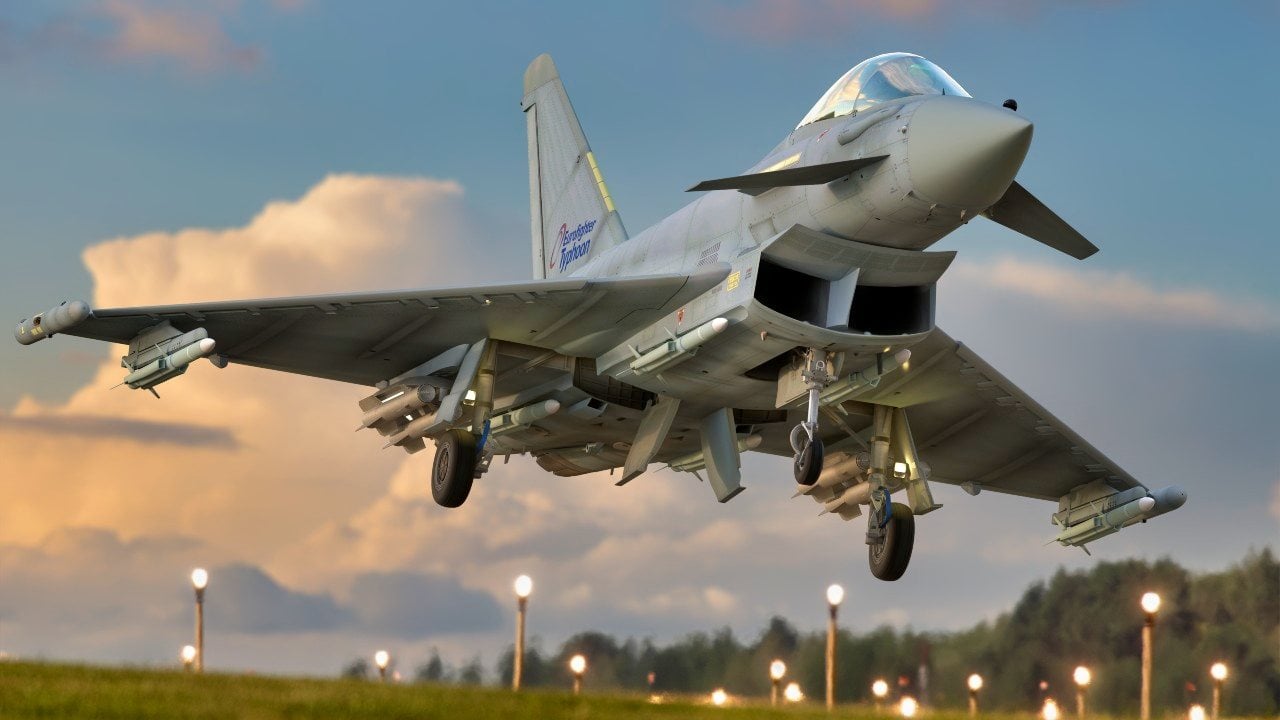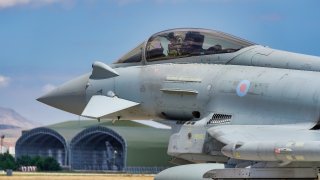Why the Eurofighter Typhoon Fighter Still Reigns Supreme
The Eurofighter Typhoon is a testament to European engineering collaboration, developed as a fourth-generation multirole fighter by a consortium of European countries, including Italy, Spain, Germany, and the United Kingdom.
Summary and Key Points: The Eurofighter Typhoon is a testament to European engineering collaboration, developed as a fourth-generation multirole fighter by a consortium of European countries, including Italy, Spain, Germany, and the United Kingdom.
-Originally conceived in the 1980s as the European Fighter Aircraft (EFA), the Typhoon became operational in 2003 and has since been praised for its maneuverability, advanced radar, and missile systems. While it symbolizes the potential for European unity, it also highlights the challenges of creating a fully independent European military force.
-Despite this, the Typhoon remains a competitive and successful aircraft, exported to several countries and continuously upgraded.
The Eurofighter Typhoon Fighter Was Great
The mid-to-late twentieth century was a halcyon moment for European unity. Laid low by the ravages of two world wars, caught between two tussling titans, the United States on one side, and the Soviet Union on the other, Europeans fantasized about a day when they would again be the center of world power.
Only, unlike the centuries before, the Europeans would eschew their petty political differences and come together in common cause. A United States of Europe would become the new way on a continent known throughout history for its bloody divisions.
From the European Coal and Steel Community which brought together West Germany and France, two bitter foes from the Second World War, into a new economic alliance, all the way through the General Agreement on Tariffs and Trade (GATT), to eventually the Treaty of Rome and the formation of the European Economic Community. Finally, with the Maastricht Treaty, the European Union was born in 1992.
But the united Europe vision did not happen overnight (and, indeed, it might not survive the decade if trends persist). It was a piecemeal and tepid affair of many false starts and multiple lateral moves. But one such significant symbol of unity came in the form of a jet fighter—a weapon of war—designed to fight the great enemy of the age: the Soviet Union.
A Successful Plane
The Eurofighter Typhoon is one of the most successful fourth-generation warplanes ever conceived.
Simply referred to as the Typhoon—giving it an even more badass persona—this bird stands as a testament to the collaborative European engineering prowess when it comes to combat aviation. The Typhoon was developed by a consortium of European countries, such as Italy, Spain, Germany, and the United Kingdom.
The Typhoon is both an impressive fighter as well as a technological marvel and a testament to strategic cooperation. That cooperation, by the way, was to be the exemplar for the European coalition that never quite fully materialized, despite all the rhetoric and support to the contrary.
For all the talk about the European Union, it remains an economic and trading alliance and less of a military coalition. That part is left to the North Atlantic Treaty Organization (NATO), which at the end of the day, is little more than a protectorate of the United States—a country that is not part of the European community of nations.
Still, the Eurofighter Typhoon was a symbol of what was supposed to be the beginning of the slow march not only to economic interdependence on the part of Europe, but of military alliance that would have, as the fantasists who dreamt of the European Union decades ago believed, ultimate political unity.
And what a bird it was.
Beginning in the late 1970s, early 1980s, the various great states of Western Europe got together to plot out their own, indigenous multirole combat aircraft. The project, initially dubbed the European Fighter Aircraft (EFA), sought to build a plane that could serve various roles, ranging from air superiority to ground attack, reconnaissance, and electronic warfare (EW). In 1983, this grand collaboration was formalized.
The first prototype took wing in 1994. Ultimately, the bird was ultimately named the Typhoon in 1998, entering service in 2003.
The Specs
Featuring a delta-canard configuration, this bird is highly maneuverable. These canards enhance the life and control at high angles of attack. And while these bogies don’t have actual stealth, such as the F-22A Raptorenjoys, the Typhoon incorporates precursors to actual stealth, notably low-observability features.
Thus, the Typhoon’s radar cross-section is greatly reduced. These birds also possess radar-absorbent materials.

Two Eurojet EJ200 engines power this bird, gifting it with a supercruise capability that only enhances its fuel efficiency and operation range.
As for armaments, this bird can carry a variety of air-to-air and air-to-surface missiles and guided bombs into combat. They come equipped with a 27mm Mauser BK27 revolver cannon, too.
Typhoons have advanced radar and missile systems, meaning that these beautiful birds excel in dogfighting as well as beyond-visual-range combat. Further, the advanced targeting pods on this bird make it a perfect vehicle for ground-attack missions. These birds can jam enemy radars and communications as well.
This bird was so excellent that it was exported to several countries outside of the original consortium, including Austria, Saudi Arabia, and Kuwait, highlighting its international appeal. These warbirds continue to enjoy multiple upgrades, meaning that it remains competitive even against more modern warplanes. For example, the Typhoon Tranche 3A includes advanced sensors, improved EW capabilities, and better integration with NATO systems.
Beyond Eurofighter Typhoon: Coming Up Next
The Typhoon program continues to evolve decades after its first introduction. Whatever happens with European integration, this bird is a seriously competitive platform with mass appeal.
France, Germany, and Spain have joined in with the Future Combat Air System (FCAS) while the UK works on its sixth-generation Tempest sixth-generation warplane. Indeed, these systems could incorporate unmanned systems into their arsenal of capabilities. However, the Eurofighter Typhoon remains the most successful joint development program that did not include the Americans.
Author Experience and Expertise: Brandon J. Weichert
Brandon J. Weichert, a National Interest national security analyst, is a former Congressional staffer and geopolitical analyst who is a contributor at The Washington Times, the Asia Times, and The-Pipeline. He is the author of Winning Space: How America Remains a Superpower, Biohacked: China’s Race to Control Life, and The Shadow War: Iran’s Quest for Supremacy. His next book, A Disaster of Our Own Making: How the West Lost Ukraine, is due October 22 from Encounter Books. Weichert can be followed via Twitter @WeTheBrandon.
All images are Creative Commons or Shutterstock.
From the Vault
Russia Freaked Out: Why the U.S. Navy 'Unretired' the Iowa-Class Battleships
Battleship vs. Battlecruiser: Iowa-Class vs. Russia's Kirov-Class (Who Wins?)


